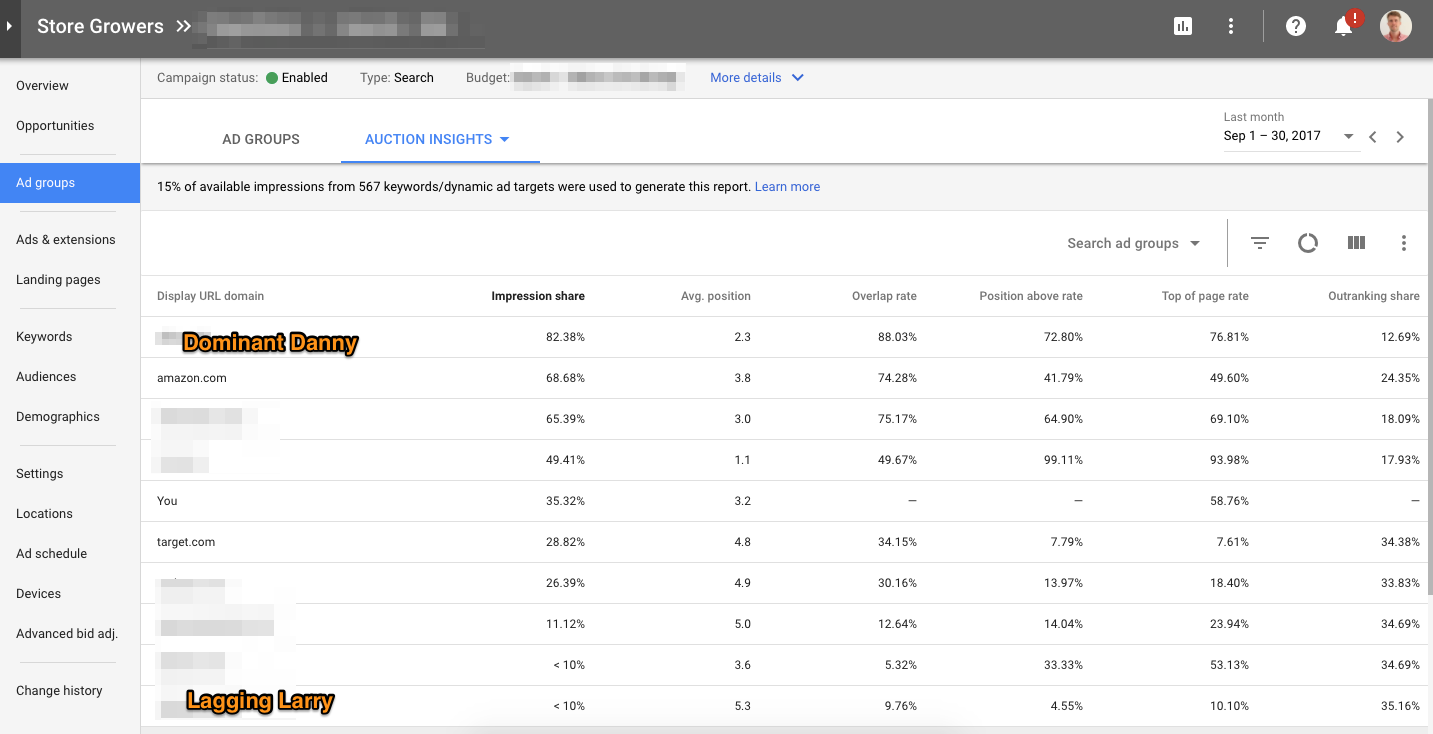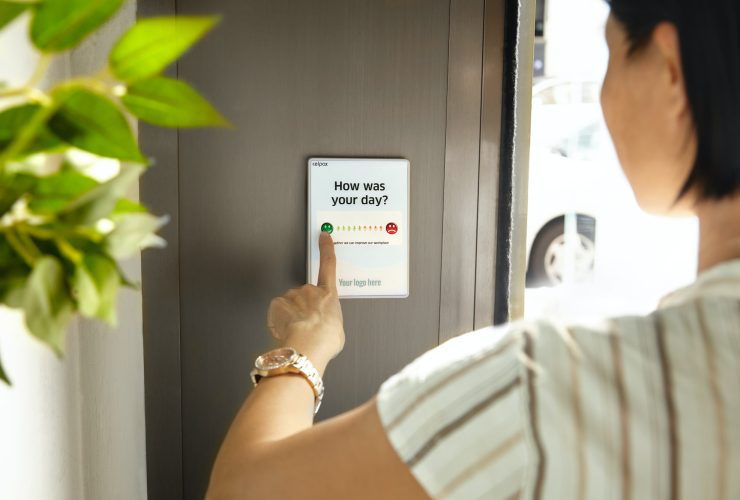Optimize Google Ads Campaigns to Outrank Your Competitors
Having a Google Ads campaign isn’t enough – you have to make sure it’s working for you to accomplish your marketing goals. If you want to stay ahead of the competition, you need to know how to optimize Google Ads campaigns to be more attractive to patients than your competitors.
Episode Transcript: How to Optimize Google Ads Campaigns to Outrank Your Competitors: Knowing What to Look For
What’s up everybody, and welcome to another episode of the Medical Marketing Podcast from Messenger – the show where we give you actionable tips and advice to help improve your practice marketing, grow your revenue, and take patient experience to the next level. I’m your host, Crawford Ifland, and today we’re going to be discussing how to keep an eye on your competition and stay ahead of other practices in your market on Google Ads.
There are three main topics we want to cover today, so let’s dive in. First up – knowing what to look for in Google Ads.
If you want to optimize Google Ads campaigns, the best place to start is to look at the data in your Google Ads dashboard itself. In reference to competitive metrics in particular, there are a few things to look for.
Click the Campaigns, Ad groups, or Keywords page menu based on what information you want to see in the report. Next, select a specific campaign, ad group, or keyword by checking the box next to each item. Finally, click on Auction insights.
The metrics in this tab will give you data on how your ads are performing against other advertisers who are bidding on the same keywords.
Let’s break down all of the numbers you’ll see:
- Impression share (IS) is the percentage of impressions that your ads receive compared to the total number of impressions that your ads could get. There are two ways you can “lose” impression share – budget and rank:
- Lost Impression Share (budget) is the percentage of time that your ads weren’t shown on the Search Network due to insufficient budget. This data is available at the campaign level only, so don’t get confused if you don’t see it in your ad groups or keywords. If this number is too high, you should consider shifting ad spend around to ensure you’re eligible to show your ads every time a patient is searching for them.
- Lost Impression Share (rank) is the percentage of time that your ads weren’t shown on the Search Network due to poor Ad Rank in the auction. If this number is too high, you should focus on improving your keyword relevance to increase your Quality Scores.
- Overlap Rate is how often another participant’s ad received an impression when your ad also received an impression. This can help give you an idea of which keywords other advertisers are bidding on, and how closely aligned your campaigns are. It’s not necessarily bad if this number is high – that just tells you that you’ve got some stiff competition, so you should focus on making your ads as engaging as possible.
- Position Above Rate is how often the other participant’s ad was shown in a higher position than yours was, when both of your ads were shown at the same time. Ideally, you want this number to be low, although don’t get too concerned if you’re bidding to be at Spot #2 or #3 to stretch your budget…somebody has to be at Spot #1, and that will increase this number.
- Top of Page Rate tells you how often your ad (or the ad of another participant, depending on which row you’re viewing) was shown at the top of the page, above the unpaid search results. If you’re looking at your own ads, you want this number to be high; if you’re looking at another advertiser’s ads, you want this number to be low.
 Now that you know a bit about the competitive metrics to look for in Google Ads, let’s explore a somewhat controversial topic: should you bid on your competitors’ names so that your ads appear when a patient is searching for their practice?
Now that you know a bit about the competitive metrics to look for in Google Ads, let’s explore a somewhat controversial topic: should you bid on your competitors’ names so that your ads appear when a patient is searching for their practice?
When You Optimize Google Ads Campaigns, Should You Bid on a Competitor’s Name?
The practice of bidding on a competitor’s name in Google Ads is somewhat controversial, for a few reasons.
First off, these ads aren’t very likely to drive a lot of conversions, primarily because potential patients are searching for your competitors by name. If they know the name of a competing practice, there’s likely some purchase intent there – they probably intend to schedule an appointment at that practice, not yours. Otherwise, they would be doing a more general search.
Still, some practices like to bid on their competitors’ names to make sure their practice is in contention every time a competitor’s name pops up.
Research suggests that it takes an average of 7 “touch points” with a brand before a patient is familiar enough to take the next step, so being in contention with other practices in your market isn’t a bad thing.
It’s my personal opinion that this practice isn’t all that bad, as long as it’s secondary to your other marketing goals. Make sure your ad spend is being correctly funneled into your highest-ticket or highest-converting campaigns. If there’s money left over, it certainly can be effective to make sure that you throw your hat in the ring, so to speak, every time your competitors are getting visibility with potential patients. Just don’t expect these keywords to drive a lot of conversions – best to think about them as “brand awareness” campaigns instead. If you want to learn more about bidding on your own name in Google Ads, just check out last week’s episode.
Now that we’ve explored the metrics to look for and thought about whether or not you should bid on competitors’ names, we’ll take a look at some third-party tools you can use to see what your competitors’ ads look like – and how you can make yours even better.
Using Third-Party Tools to “Snoop” on Your Competitors
When you get started using Google Ads and set up your first campaign, to some extent, you’re shooting in the dark. You can try your hand at creating the most compelling, engaging ads you can, but what if other competitors in your market have more compelling ads? How can you know what their ads look like? And how can you improve yours?
This is where third-party tools come in.
There are a variety of paid third-party SEO and SEM tools that let you see what competitors’ ads look like. When used for SEO, these tools leverage historical data and other competitive metrics to estimate what your competitors are receiving in terms of traffic, what keywords they’re ranking for, etc. They aren’t always 100% accurate, but they can help give you a picture of how you rank in comparison.
When used for SEM, these tools use historical data from Google searches to display actual ads your competitors have put out in the wild, so you can know exactly what they’re saying.
Our favorite tools for this are SEMRush and Ahrefs. Both are incredibly robust research tools for SEO and SEM, and are very much worth the investment. I believe both have some sort of limited free plan, but you’ll really want to upgrade to their starter plans to get the most out of these tools, both of which run about $100/month.
We won’t get into the specifics of each, but both of these tools will allow you to type in a competitor’s domain name to see metrics about their digital marketing.
If the practice is running ads (or if they have in the past), you’ll be able to see what their ads looked like.
This can be incredibly useful for knowing which parts of your ads need to improve, or even for surfacing keywords you should be bidding on, but aren’t. Paying for a third-party tool like SEMRush or Ahrefs to get this competitive data is a great investment for your practice. These tools are incredibly valuable resources, and when combined with the competitive metrics that you get from Google Ads, can help you improve your campaigns, make them more compelling, and get ahead of your competitors in your market.
Next Week
That’s all for today’s episode of the Medical Marketing Podcast.
Before we end, a question for you: have you ever viewed a product on a website like Amazon, and then for the next week, you see it “following” you everywhere around the Internet? I’m guessing you have.
This (sometimes annoying) phenomenon is called remarketing, and it’s what we’ll explore next week. We’ll look at how remarketing works, why it’s so psychologically effective, and how you can use it to get more patients through the door. It’s going to be a great episode, so be sure not to miss it.
As always, we’ll have a link to the show notes in the description, and don’t forget to browse our website at www.messenger.md – we’ve got tons of great resources on how to improve your practice marketing, grow revenue, and take your patient experience to the next level.
For Messenger, I’m Crawford Ifland – see you next week!







